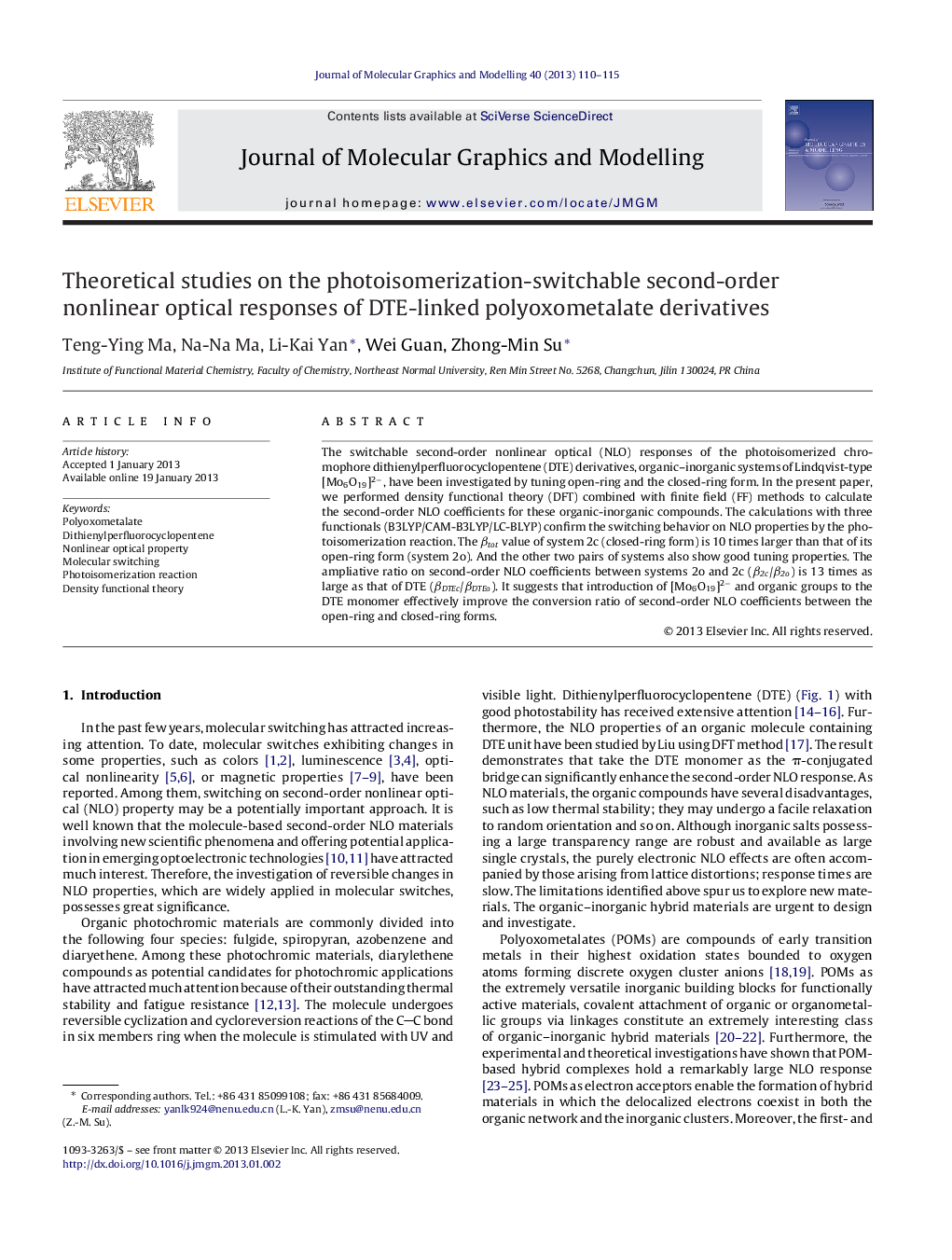| Article ID | Journal | Published Year | Pages | File Type |
|---|---|---|---|---|
| 443406 | Journal of Molecular Graphics and Modelling | 2013 | 6 Pages |
The switchable second-order nonlinear optical (NLO) responses of the photoisomerized chromophore dithienylperfluorocyclopentene (DTE) derivatives, organic–inorganic systems of Lindqvist-type [Mo6O19]2−, have been investigated by tuning open-ring and the closed-ring form. In the present paper, we performed density functional theory (DFT) combined with finite field (FF) methods to calculate the second-order NLO coefficients for these organic-inorganic compounds. The calculations with three functionals (B3LYP/CAM-B3LYP/LC-BLYP) confirm the switching behavior on NLO properties by the photoisomerization reaction. The βtot value of system 2c (closed-ring form) is 10 times larger than that of its open-ring form (system 2o). And the other two pairs of systems also show good tuning properties. The ampliative ratio on second-order NLO coefficients between systems 2o and 2c (β2c/β2o) is 13 times as large as that of DTE (βDTEc/βDTEo). It suggests that introduction of [Mo6O19]2− and organic groups to the DTE monomer effectively improve the conversion ratio of second-order NLO coefficients between the open-ring and closed-ring forms.
Graphical abstractThe switchable second-order nonlinear optical (NLO) responses of series DTE-linked polyoxometalate derivatives have been studied by density functional theory (DFT) method.Figure optionsDownload full-size imageDownload high-quality image (168 K)Download as PowerPoint slideHighlights► We study switchable second-order nonlinear optical properties of POM derivatives. ► The largest difference because of organic substituted is 63.3 times. ► The open-closed ring conversion of DTE exhibit effective switch for second-order NLO. ► The closed-ring systems possess high static first hyperpolarizability. ► Performed TDDFT to elucidate the origin of second-order NLO properties.
